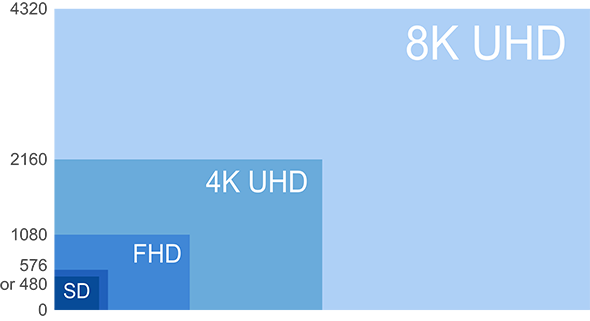The European Broadcasting Union has criticized the consumer electronics industry, arguing that the push to increase TV resolution may come at the expense of equally significant advancements in color, dynamic range and audio. In a policy statement issued last week, the group said focusing on 4K resolution as the sole defining characteristic of next-generation television hardware may undermine the success of new broadcast services.
Instead, the EBU Technical Committee argued for the inclusion of higher frame rates, increased image contrast, better color and more immersive audio in future broadcast standards. And the group even went one step further, suggesting the development of an "enhanced 1080p" broadcast format that would include certain UHDTV parameters such as high frame rates, extended dynamic range, and wider color gamuts, without embracing 4K resolution.
The organization didn't exactly sound an alarm in its statement, but it did note in a single bullet point that broadband services including YouTube, Netflix and Amazon seem to be ready to deliver some of these extended parameters for picture quality that the broadcast industry is, as yet, unprepared to address. For example, Dolby Vision (we've written a little more about that here) is expressly designed to dramatically increase the dynamic range of encoded video images, but there are no guidelines yet on how that kind of technology might be integrated with next-generation broadcasts.
The statement also acknowledges the headlong rate of technological announcement, noting that 8K "Super Hi-Vision" is expected to go online in Japan just in time for the 2020 Olympics and wondering about that system's impact on the rest of the world.
Does the EBU have a point? Sure. Even at 1080p, there's plenty of room for improvement over standard HDTV broadcasts, especially when compression artifacts in challenging shots (strobe lights, rainfall, confetti) threaten to reduce the entire screen to a checkerboard of macroblocks. And high dynamic range imagery really can be breathtaking, giving TV more of that looking-out-the-window quality.
But even though it would be a shame for the industry to advance to 4K broadcasts that emphasize more pixels rather than better pixels, you have to wonder how much time it will really take for the broadcast industry to sort out all of these different picture enhancements. (Enough time for some enterprising TV-maker to leapfrog the standard and start selling 8K TVs? Maybe.)
We're honoring the EBU's explicit request that the document not be quoted in part, but you can download the whole thing as a PDF from the EBU website.
Did you enjoy this article? Sign up to receive the StudioDaily Fix eletter containing the latest stories, including news, videos, interviews, reviews and more.
